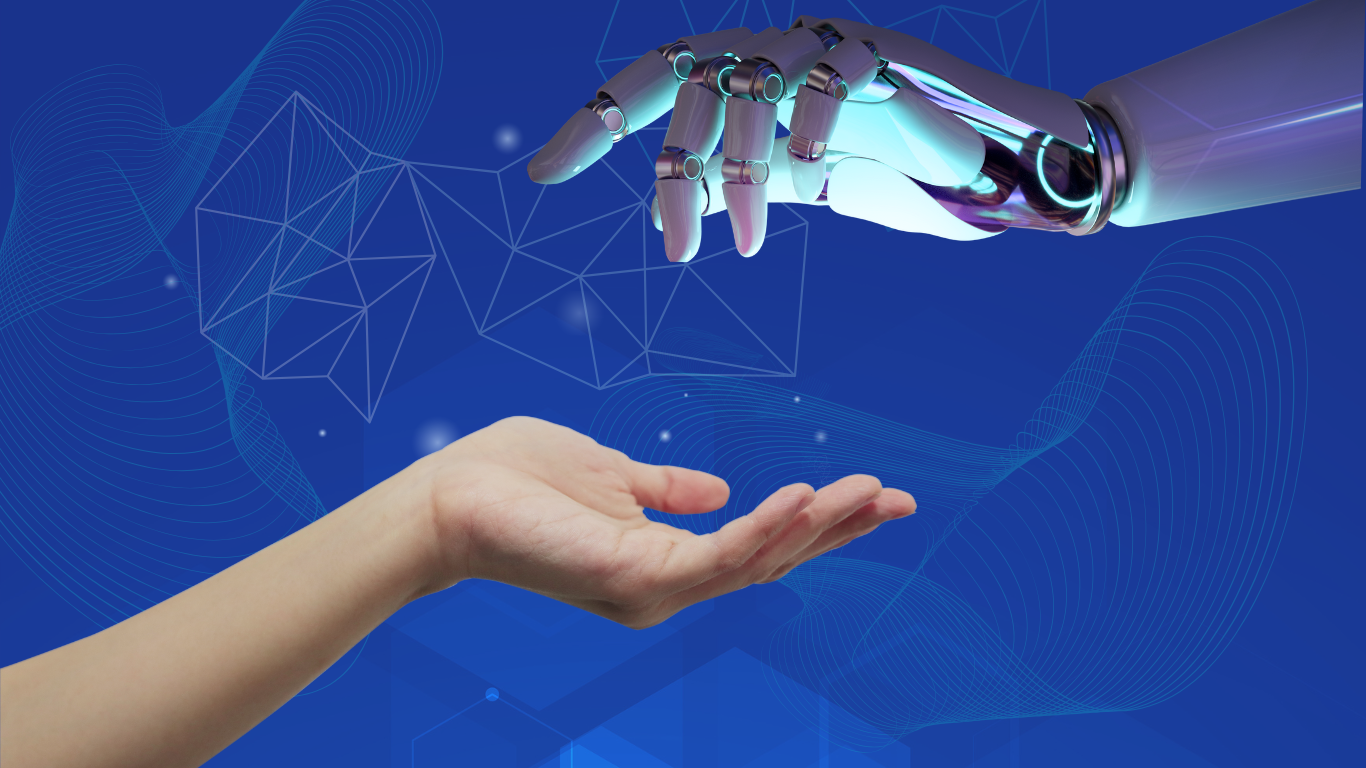AI in CX: Game-changer or just hype?
AI has become a very important tool in every industry, and definitely, Customer Experience (CX) is no exception, the question arises: is AI in CX a game-changer or just hype? CX has become a critical differentiator for businesses in today’s competitive landscape. FrontLogix, by offering AI-enabled customer service solutions, is redefining CX through the incorporation of sophisticated technology with human expertise to deliver exceptional results.
Businesses are making significant daily investments in AI-driven tools, promising to transform the way how they engage with customers. AI is being promoted as the key to efficient customer interactions through tools like chatbots and predictive analytics. Is AI in CX a game-changer or just hype for all involved? Let’s analyze the topic in more depth to uncover whether AI is living up to its promises or falling short of expectations.
Why AI Seems Like a Game-Changer
1. Personalization on a Whole New Level
AI’s capacity to provide highly customized experiences raises the question: AI in CX: Game-changer or just hype? Businesses may customize their interactions to meet the demands of each individual by using AI to find patterns and preferences in the massive volumes of customer data that are analyzed. Whether it’s making product recommendations based on previous purchases or developing marketing messages that appeal to particular groups, AI enables businesses to provide a degree of customization that was previously impossible.
This personalization goes beyond surface-level interactions, making AI in CX: Game-changer or just hype? a compelling argument for its transformative potential. AI can predict what customers might need before they even realize it themselves. For example, suppose a customer frequently buys skincare products. In that case, an AI solution might suggest complementary items, notify them when their favorite product is back in stock, or even inform them about the delivery time, price, and additional fees (if applicable, like customs, for example).
FrontLogix enhances this personalization through AI-powered tools like virtual agents and live chat systems that deliver tailored responses based on real-time customer data. These solutions ensure every interaction feels unique and relevant.

GUIDE
9 Critical Things AI Cannot Replace In Contact Centers
Our guide explores 9 critical areas when AI falls short and human expertise excels.

2. Faster and More Efficient Customer Service
Chatbots and virtual assistants are examples of AI-powered solutions that have revolutionized customer service by offering round-the-clock availability and quick responses. The efficiency of these AI-powered solutions further fuels the discussion around AI in CX: Game-changer or just hype? These systems can manage large numbers of queries at once, cutting down on wait times and increasing the likelihood that they will be resolved. AI makes sure that support is always available, whether it’s via providing answers to frequently asked questions or assisting clients with troubleshooting procedures.
With FrontLogix, businesses benefit from intelligent call handling and real-time call transcription, enabling faster resolutions while maintaining high-quality service standards. This efficiency allows human agents to focus on complex tasks requiring empathy and creativity, reinforcing the notion that AI in CX: Game-changer or just hype? can be a game-changer.
3. Proactive Problem-Solving
Instead of only responding to consumer demands, AI predicts them. Predictive analytics is a prime example of why many believe AI in CX: Game-changer or just hype? leans toward being transformative rather than overhyped. Businesses may anticipate possible problems with predictive analytics and take action before they become more serious. An automated system can provide proactive support, for example, if a customer’s actions indicate frustration (such as searching for troubleshooting instructions repeatedly).
FrontLogix takes proactive care further by integrating AI-powered CSAT (Customer Satisfaction) analysis into its solutions. This enables businesses to identify dissatisfaction trends early and implement corrective measures immediately, supporting the idea that AI in CX: Game-changer or just hype? is more than just a buzzword.

4. Seamless Omnichannel Experiences
Modern customers interact with brands across multiple channels: websites, social media platforms, mobile apps, and physical stores. They expect these experiences to be interconnected and consistent. AI plays a crucial role in creating seamless omnichannel experiences by integrating data from various touchpoints into a unified view. This capability adds weight to the argument that AI in CX: Game-changer or just hype? is indeed a game-changer.
Through FrontLogix’s advanced AI-enabled reporting tools, businesses gain insights into customer journeys across channels, ensuring continuity and reducing frustration during the transition. This seamless integration supports the notion that AI in CX: Game-changer or just hype? is more than just hype.
5. Enhanced Operational Efficiency
Because AI automates repetitive operations like data input, appointment scheduling, and inventory management, it greatly improves operational efficiency. Predictive analytics may help businesses cut down on inefficiencies across divisions, optimize operations, and allocate resources efficiently. This increases efficiency and guarantees that clients receive prompt, error-free service, which is a key aspect of why AI in CX: Game-changer or just hype? is seen as transformative.
FrontLogix leverages AI-driven workforce management models that analyze historical data and trends to forecast future demand accurately. This ensures optimal staffing levels while avoiding unnecessary expenses, further supporting the argument that AI in CX: Game-changer or just hype? is a game-changer.

The Challenges of AI in CX
While the benefits of AI are undeniable, it’s important to acknowledge the challenges that come with implementing this technology in customer experience strategies. The question remains: AI in CX: Game-changer or just hype? This isn’t an easy task to accomplish, as we are facing the influence of AI in almost every aspect of our daily lives.
1. High Costs and Complexity
AI systems are not cheap. From purchasing software licenses to training employees on how to use them effectively, businesses must invest significant resources upfront. Additionally, integrating AI into existing workflows can be complex, especially for companies relying on legacy systems that aren’t compatible with modern technology. While the benefits of AI are undeniable, the high costs and complexity of implementation raise questions about whether AI in CX: Game-changer or just hype?
Small and medium-sized businesses often struggle with these costs and complexities, making it harder for them to compete with larger organizations that have more resources to dedicate to innovation.
2. The Risk of Losing the Human Touch
Despite advancements in natural language processing and emotional recognition technologies, AI cannot still replicate genuine human empathy. This concern leads many to wonder: AI in CX: Game-changer or just hype? Over-reliance on AI can lead to impersonal interactions that alienate customers rather than engage them, challenging the idea that AI in CX: Game-changer or just hype?
Customers value authenticity and connection—qualities that are difficult for machines to emulate. Over-reliance on AI can lead to impersonal interactions that alienate customers rather than engage them.
FrontLogix, however, strikes the perfect balance between automation and human interaction by empowering agents with real-time insights while ensuring they remain central to complex problem-solving tasks
3. Data Privacy Concerns
To work well, AI mostly depends on data collection and analysis. But there are privacy and security issues with this reliance, which complicates the debate over whether AI in CX: Game-changer or just hype? Consumers are understandably growing more concerned about the usage of their personal data.
By being open and honest about their data activities and abiding by laws like the CCPA and GDPR, businesses may carefully manage these concerns. Failing to do so could diminish trust and harm a brand’s reputation, making it harder to prove that AI in CX: Game-changer or just hype? is more than just hype.

4. Unrealized Potential
The debate over AI in CX: Game-changer or just hype? is ongoing as many companies invest in AI tools without fully understanding how to use them strategically. Skeptics find it easy to write off AI as overhyped because poor implementation frequently produces disappointing outcomes. Some businesses, for instance, prioritize cost-cutting automation over improving customer experiences; others underestimate the significance of high-quality data inputs or fail to match their AI ambitions with more general company objectives. Even the best artificial intelligence systems can fail to meet expectations if they are not properly implemented and have unclear goals.
5. Security Risks and Vulnerabilities
As the discussion around AI in CX: Game-changer or just hype? continues, it’s crucial to address the security concerns associated with AI-driven customer experience platformsPlatforms for customer experience that use AI run special security vulnerabilities. Malicious actors may try to obtain sensitive customer data by using AI models, making AI systems susceptible to hacking efforts. AI-driven solutions also need to be built with strong security features to guard against data breaches and keep customers’ trust. To avoid possible legal ramifications and harm to one’s reputation, it is essential to ensure the security of AI systems.
How FrontLogix Strikes the Right Balance
Striking the right balance between automation and human interaction is essential for unlocking AI’s potential in Customer Experience (CX). FrontLogix, an expert in AI-enabled customer service, serves as an example of how businesses can achieve this balance by combining advanced technology with human expertise to deliver exceptional CX. While AI excels at handling repetitive tasks and analyzing data at scale, human agents bring empathy, creativity, and emotional intelligence into the equation—qualities that are irreplaceable for building meaningful customer connections.
FrontLogix leverages AI tools like virtual agents, intelligent call handling, and real-time coaching to streamline operations while empowering human agents to focus on complex, high-value interactions.
Additionally, FrontLogix’s real-time call transcription and in-call coaching provide agents with instant insights during live interactions, ensuring that every customer receives personalized and empathetic service.
Is really AI in CX: Game-Changer or Just Hype?
So, is AI in CX truly transformative? The answer depends on how businesses approach its implementation.
FrontLogix stands out as a partner committed to helping companies strike this vital balance in the age of massive technology changes. FrontLogix leverages advanced AI technology while retaining the invaluable human element, ensuring businesses exceed customer expectations and maintain genuine interactions.
For companies willing to invest time and resources into thoughtful integration strategies, AI can be a powerful game-changer, delivering hyper-personalization at scale, improving efficiency, and enabling proactive care like never before. However, those who rush into adoption without clear objectives risk falling victim to the hype, wasting time and money on tools that fail to deliver meaningful results, that will help the businesses to be successful.
Ultimately, we at FronLogix truly believe that the success of AI in CX hinges on its ability to augment-not replace-the human touch that remains central to great customer experiences. When used responsibly and strategically, AI has the potential not only to meet but exceed expectations, redefining what’s possible in customer engagement for years to come. Find out more by contacting us today!

Found this useful?
Subscribe to our newsletter and get CX and WFM news delivered to your inbox.
Don’t worry, we won’t flood your inbox – just one insightful email a month!








